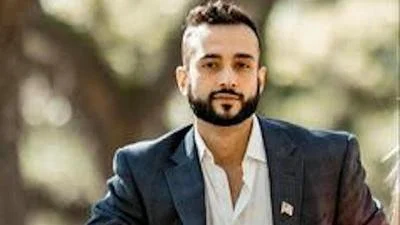Erin Davis Valdez has seen education from many sides. She has been a home-schooled student, teacher and school administrator, as well as participating in educational entrepreneurship, philanthropy, workforce development, online instruction and policy research.
Valdez is the policy director for the Next Generation Texas initiative at the Texas Public Policy Foundation (TPPF). At TPPF, Valdez has researched education at the secondary and post-secondary levels. Valdez earned a master's in classics from the University of California, Santa Barbara, and a bachelor's degree in classical studies from Hillsdale College in Michigan.
The Next Generation Texas initiative at TPPF focuses on “preparing Texans to become self-sufficient, prosperous citizens through access to a quality education, abundant job opportunities, and skills development and training.”

Texas Gov. Greg Abbott.
Its top priorities are parental control over their children's education, expanding charter schools, aligning technical training with careers and improving higher education affordability and accreditation.
Valdez revels the work and her driving passion is parental empowerment.
Texas public and private schools are evolving and facing numerous challenges, and TPPF is a strong supporter of charter schools as an option for families and communities.
“Charter schools can be a good solution, especially in population-dense areas and certainly in some communities, depending on their population density, that can make sense,” Valdez said. “The way charter schools are generally done is you need a certain critical number of students to make it work from a funding standpoint.
"In rural Texas they may struggle for instance, on finding enough facilities funding," she added. "I think charter schools are great, and especially charter schools that are embracing kind of more of a micro-school approach where they have more of a modernized one-room schoolhouse kind of thing.”
It’s succeeding in Arizona, she noted. Prenda is connecting students with local micro-schools.
“Generally speaking, charters tend to serve a larger bulk of students, and especially in areas we don’t have a lot of students that might not be as easy to adapt to those situations,” Valdez said.
She is optimistic Gov. Greg Abbott’s proposal to reduce property taxes with an infusion of $15 billion in state dollars has a good chance of succeeding.
“I think the stars are aligning there,” Valdez said. “I think the governor's made it clear this is a priority of his. We’re seeing some good things coming out of the Texas House as well."
She also is glad to see education savings accounts (ESAs) gain support. Public support for education choice policies like ESAs is at all-time highs due to concerns over long school shutdowns during the COVID-19 pandemic, mask mandates, and what is seen as increased politicization of classrooms. In a recent poll, 70% of Texans and 77% of parents of school-age children support ESAs.
According to a commentary by Jason Bedrick at the Heritage Foundation, ESAs allow families to use state funds to pay for private school tuition, tutoring, textbooks, online courses and special needs therapy. Nine states already have adopted ESA policies, including four in the last two years.
According to Bedrick, not everyone supports ESAs. Teachers unions and allies are trying to block families from accessing alternatives to the district school system. Opponents argue that ESAs either don’t benefit or actually harm rural district schools.
However, high-level support for ESAs came from the most rural counties in Texas, including Culberson (97%), Edwards (89%), Kent (87%), McMullen (90%), Kenedy (100%), Roberts (87%), and Terrell (90%). About seven in 10 rural families nationwide live within 10 miles of a private elementary school, Bedrick noted.
Valdez said studies show ESAs are like a powerful tide that lifts all boats.
“Wherever there’s more choices for students, public schools improve," she said. "You see this in Florida, that achievement for minority students increased dramatically after school choice policies started to be enacted in the early 2000[s]. Across the board, they went from one of the poorest-performing numbers among minority students to now they're the best in the nation, they’re number one."
The TPPF also has been studying the continued population decline in rural Texas.
“Texas is becoming more and more urban. That’s not really a surprise,” Valdez said. “There are populations that are suffering a lot of the loss. And it’s unfortunate because these communities, they have institutions that really are the heart of their communities in some ways."
She said it’s crucial for people in those communities to understand that to grow again, to attract young families and start businesses, they must have more options and opportunities, particularly in education.
“They’re pretty used to being able to say, ‘Well, here’s where I want to shop,’ or ‘I can order something from Amazon if this store’s not in my town,’” Valdez said. “And so you can see why small town life might be very attractive in some ways to families. But if you know that the educational options for them aren’t what they hope for or aren’t what they’re looking for, that could be a very big turnoff to moving back to a smaller town, even if the cost of living is attractive and other things are attractive about moving to those communities.”
Educational empowerment and options can be a boost for these communities and serve as an incentive to lure more new or returning residents. Studies also show that they will not impact public schools.
“Most people still keep their kids in public schools so that we don’t think that that fear should get in the way of folks embracing this because more growth means more growth for all institutions,” Valdez said. “And so there are probably families that say, ‘Hey, look, I’d love to move back to the town where I grew up and maybe start a little business and have a life there’ — but maybe they don’t want to homeschool full-time their kid? Because they don’t feel like they can or they need other options.
“So, giving them the ability to direct some educational funds towards other providers could be a way for them to say, ‘We can make this work, we can actually get back to those communities,’” she said. “And again, with more growth, there’s more growth for all institutions, generally speaking. So it’s not a zero-sum game, which is something that we need to really think about.”
The quality of education in rural areas varies widely, Valdez said.
“Even in rural Texas, some of the schools are doing really, really well. We hear great stories about the options and the ways those schools support the communities,” she said. “Other communities, that’s not the story. They may have limited options. They may struggle to find teachers sometimes. You know, there are a lot of challenges to running a full-scale K-12 system in a lot of rural Texas. And we’ve got a lot of really small districts in this state. We’ve got districts with under 500 kids in them.”
Some districts seek to recruit teachers, while others try to find someone who already lives in the area. These are very real challenges for many school districts.
Valdez came to work for TPPF in part because the idea of returning to the Austin area to be closer to family was very appealing. She had taught at private schools in Austin for 11 years before moving into administration.
She joined the Texas Public Policy Foundation as an analyst for the Center for Innovation Education.









